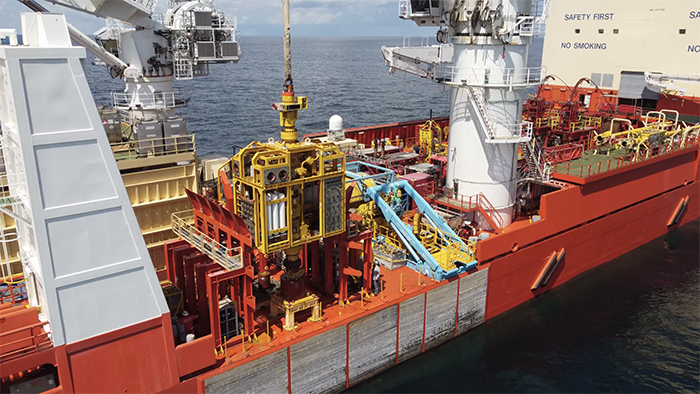Offshore technology: The rise of riserless light well intervention
Published by Emily Thomas,
Deputy Editor
Oilfield Technology,
Riserless light well intervention (RLWI) operations have been a proven technology in shallow water environments for several years, but it is only recently that the discipline has expanded to and taken hold in the deepwater oil and gas production sector. This change occurred largely due to the so called ‘bath tub’ down turn experienced by the industry through the 2010s. The slump in the price of oil forced operators and suppliers to diligently review how they do business, leading to a requirement to maximise efficiency in what was often a sub-production cost environment. New developments were shelved, delayed and in some cases abandoned. Production enhancement became of paramount importance to maximise the recovery rates from existing fields and to reduce the time required to exploit the field, so that the return on CAPEX and OPEX investments in a certain field could be maximised. Operators have seen an increase in production numbers even above the initial production rates where the norm for an intervention is a 20 – 50% increase in overall production.
The concept
Well intervention operations were traditionally carried out by oil rigs using riser-based systems. This method was a costly, time-consuming process from an expensive, carbon-intensive asset. The ‘riserless’ concept allowed the execution platform to change from an oil rig to a specialised mission-specific vessel. This allows for efficiencies in all areas of the operation: mobilisation of equipment, transit to work site, deployment of fewer pieces of equipment and recovery of equipment for transit to the next worksite or demobilisation point. An additional benefit of this is an overall reduction in the carbon footprint of the operations from start to finish. When accessing a well through the deepwater RLWI stack, all kinds of wireline and slickline operations can be performed, enabling full well diagnostics, mechanical intervention, and any other interventions aimed at increasing production or bringing wells back online.

Figure 1. The Baker Hughes 7.2 RLWI stack to be launched from the C-Innovation Island Venture.
C-Innovation and RLWI operations
C-Innovation (C-I) started RLWI operations in 2017 and has since progressed to become an industry leader in deepwater RLWI operations. Through select partnerships with industry leaders and the vertical integration of the Edison Chouest Offshore (ECO) family of companies, it has been able to deliver an integrated product that has maximised cost reduction, risk reduction and production enhancement to operators all under a single contract. The evolution of this work with client teams and industry partners has led to increased efficiencies and new execution concepts. This has included modest concepts such as offshore reloading of chemicals to allow for multi-well campaigns without returning to the dock to the more advanced initiatives such as the Well Service Jumper (WSJ) operation, which allowed for horizontal offset of operations to prevent SIMOPS clashes with host production facilities. These advances are repeatable concepts that can be mirrored across assets in the US Gulf and globally.
C-I’s well intervention programme has to date performed 31 hydraulic interventions and 15 mechanical interventions. One of C-I’s operational improvements has been to equip the C-I dock with dedicated space and equipment allowing for advanced fluid tracking for faster between-well maintenance. The mechanical interventions included more than 100 successful wireline runs, both e-line and slickline, up to 150 fpm trip speed in hole. C-I recently completed its longest mechanical intervention on board the Island Venture. With 79 days offshore, the operation included 22 e-line and slickline runs, as well as 22 205 bbl of fluid pumped into the well.

Figure 2. C-innovation’s Island Venture performing RLWI operations in the Gulf of Mexico.
Conclusion
C-I is bringing together a multitude of existing, proven systems and services to execute seamlessly for the ultimate benefit of operators. The organisation manages the variety of services necessary to complete the job. Operators therefore do not have to shop for each service and manage the interfaces for a variety of companies.
Read the article online at: https://www.oilfieldtechnology.com/product-news/27042023/offshore-technology-the-rise-of-riserless-light-well-intervention/
You might also like
Union Jack Oil plc announce resumption of production at Keddington Oilfield
The newly installed equipment and facilities are working well and continue to be fine-tuned to optimise production.

